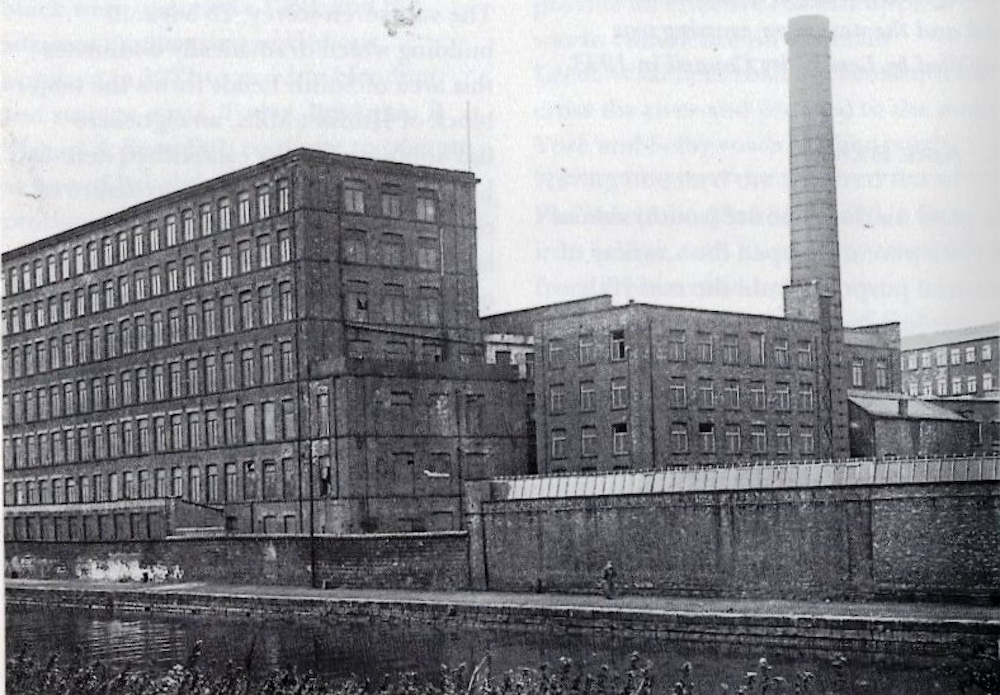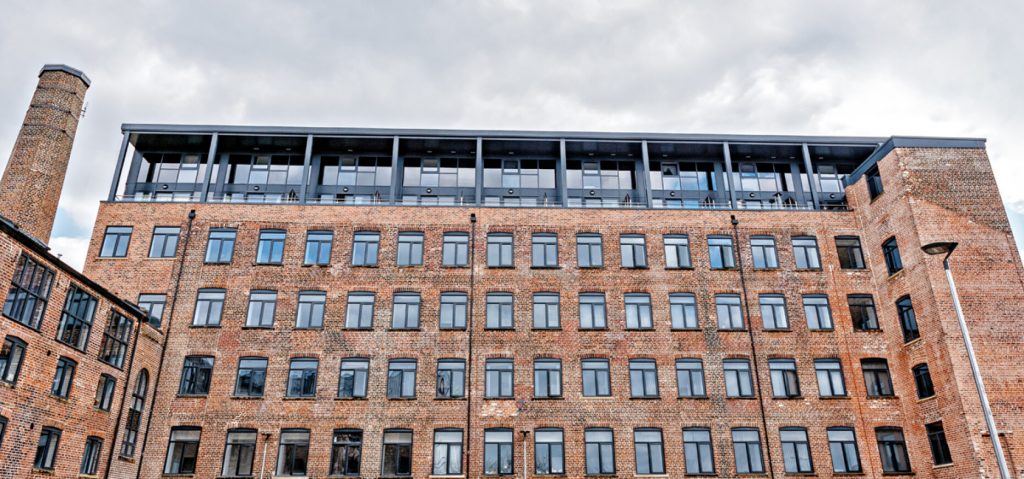
Hunslet Mills are of considerable architectural and landscape value, the seven-storey twenty-five bay mill building which dominates the skyline of South Leeds and forms the major block of an eight acre flax spinning mill.
It is a structure that is very important not only in landscape terms, but also for its methods of fireproof construction. Inside three longitudinal rows of cast-iron columns carry early examples of ‘T’ section cast-iron beams which in turn support masonry floors.
This arrangement was probably designed by William Fairbairn of Manchester who in the 19th Century was a leading engineer and designer of mill buildings and was responsible for Armley Mill and Saltaire Mill. Who better then than him to design and build Hunslet Mill for John Wilkinson on land purchased from Sir George Goodman and built between 1838 and 1842.
John Wilkinson (1799-1856) was a flax spinner who came from an humble beginning to found the business of Wilkinson & Company. He built up a reputation for honesty and integrity and was remarkable for being a warm-hearted and open-handed benevolent man who took the moral and intellectual welfare of his workers in his mills seriously. For the benefit of the workers he erected excellent schools, which he sustained in a state of great efficiency and at considerable expense to himself and his mills were generally considered models of order, cleanliness and arrangement.
In the early years the mill was beset by troubles of every description. A strike in 1847, at this time he employed 1,500 women flax reelers. There was severe gale damage in 1850; this was followed by a serious cholera outbreak in 1854 and then the death of John Wilkinson in 1855.
Liberalism were John Wilkinson’s politics he was a Borough Magistrate and was twice married. On his death on 12 March 1856 aged 57 years at his home in Gledhow Mount, near Leeds, he left behind a widow and two sons and two daughters, one of whom was married in May 1846 by Mr. Joshua Burton son of John Burton Esq of Roundhay. His remains were interred in the Woodhouse Cemetery near Leeds.
There were two major fires one in 1865 and another in 1866 this was then followed by bankruptcy of the firm in 1867. Despite all these setbacks the company made considerable achievements as its 1,000 workers processed some 2,000 tons of flax and 1,040 tons of tow each year.
In 1868 the mill was occupied by a firm of linen manufacturers called Richard Buckton & Son. The next owners of Hunslet Mills were Oldroyd, Blakey & Latta (later to be called Oldroyd & Son) who used it to manufacture blankets and who, about 1900 were producing up to 1,000 pairs each day. OE Dodgson as Dodgson & Hargreaves also began to manufacture blankets in part of the Mills from the mid-1920s, continuing to weave blankets here until 1966 when it closed.
Of the remainder of the Hunslet Mills it was let out in units to companies like Chadwick Brothers, woollen manufacturers in the years 1930-37, Mellish, Richardson & Company, woollen manufacturers also covering the period 1930-37, Cohen & Company (later Northern Machine Screws Limited) screw makers, 1906-1913, Goodby’s Limited, engineers, 1910-13, William Gott, builders, 1905-1940, The Eureka Boiler Composition Company (later to be called Chadwick Brothers Eureka Oil Works) covered the time 1914-24, our next businesses are Broadhead & Conyers, leather merchants, 1910-13, William Jackson, leather merchant and boot maker, 1905-18.
In the late 1970s and early 1980s a Company called Exhaust & Brakes that sold vehicle parts had a store at the mill. All the above is a good example of how such a huge building could be used to house so many different trades after their original owners had gone out of business.
Victoria Works fronting on to Goodman Street was constructed for WB Holdsworth between the years 1835-38. Holdsworth already had a mill in Lands Court before moving to the open fields, probably owned by George Goodman and by 1840 there was a building on this site. The Works were occupied by tailoring company called Botterill & Senior from the early 1930s and later owned by a firm of ironmongers called RH Bruce before they moved out in the early 1970s.
Part of the mill was demolished in 1986 but the remaining part became a Grade II listed building which was planned to be converted into 700 apartments but was left derelict. The complex was purchased by the developers Evans Property Group and Caddick Developments; however their development plans ultimately failed to commence leaving the complex derelict until the current developers JM Construction bought the site in the mid-2010s. In 2017 construction started to redevelop the mill complex, now called Victoria Riverside, into 356 apartments and completed in 2023.

While you’re here, can we ask a favour?
South Leeds Life is published by a not-for-profit social enterprise. We keep our costs as low as possible but we’ve been hit by increases in the print costs for our monthly newspaper which have doubled in the last two years.
Could you help support local community news by making a one off donation, or even better taking out a supporters subscription?
Donate here, or sign up for a subscription at bit.ly/SLLsubscribe



Thank you Ken Burton for your interesting article about Hunslet Mills and Victoria Works , I didn’t know the history of these buildings until reading your article
Brilliant article. Thank you for taking the time to write it.